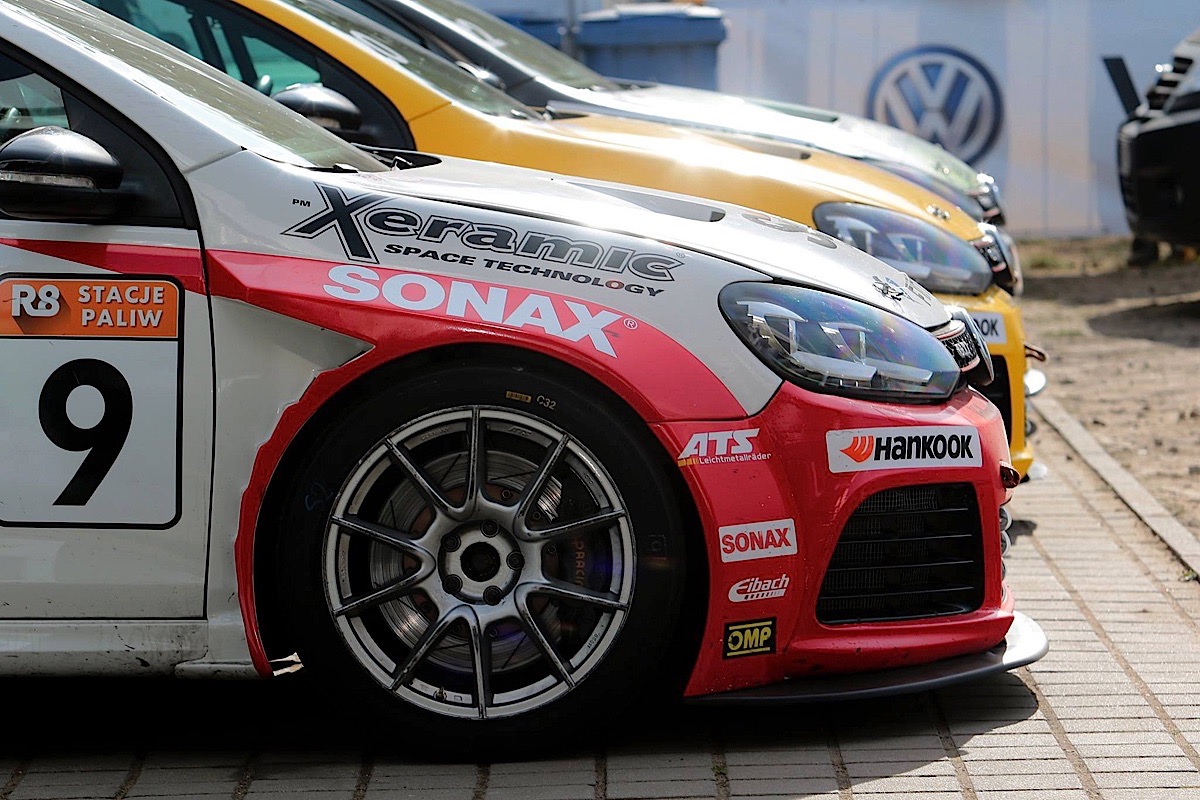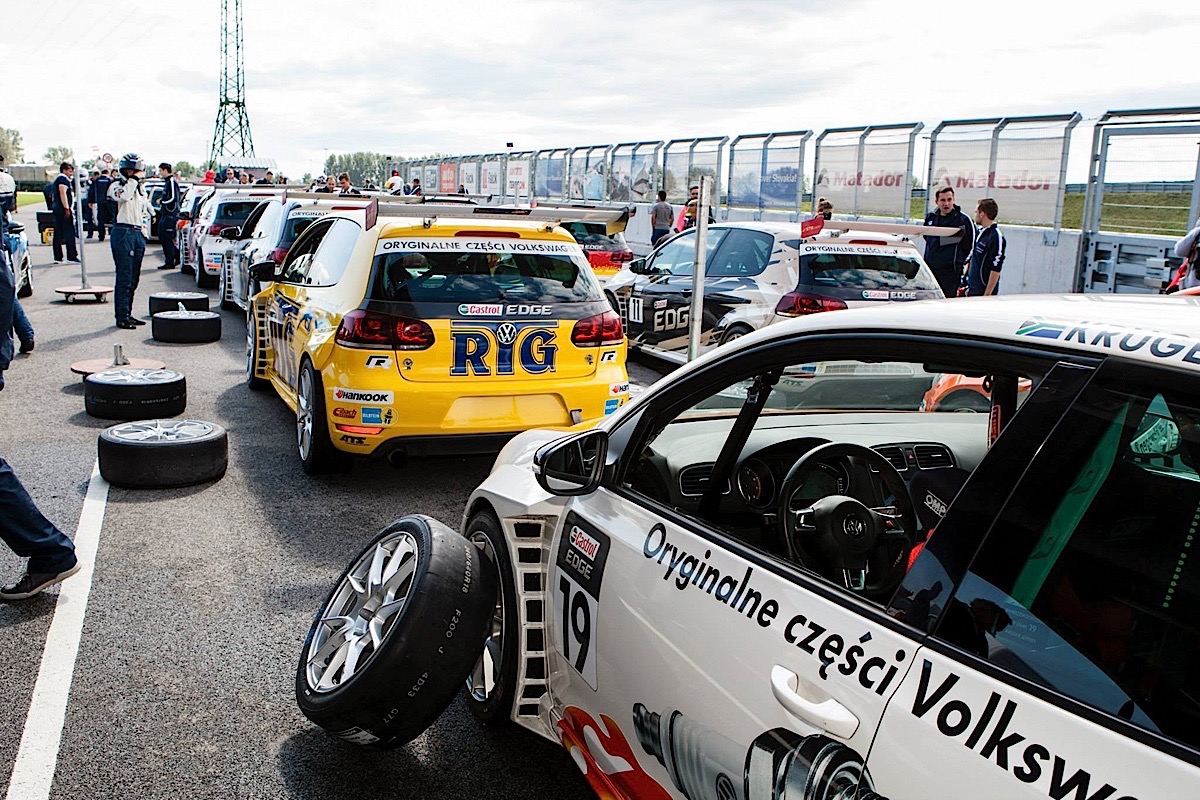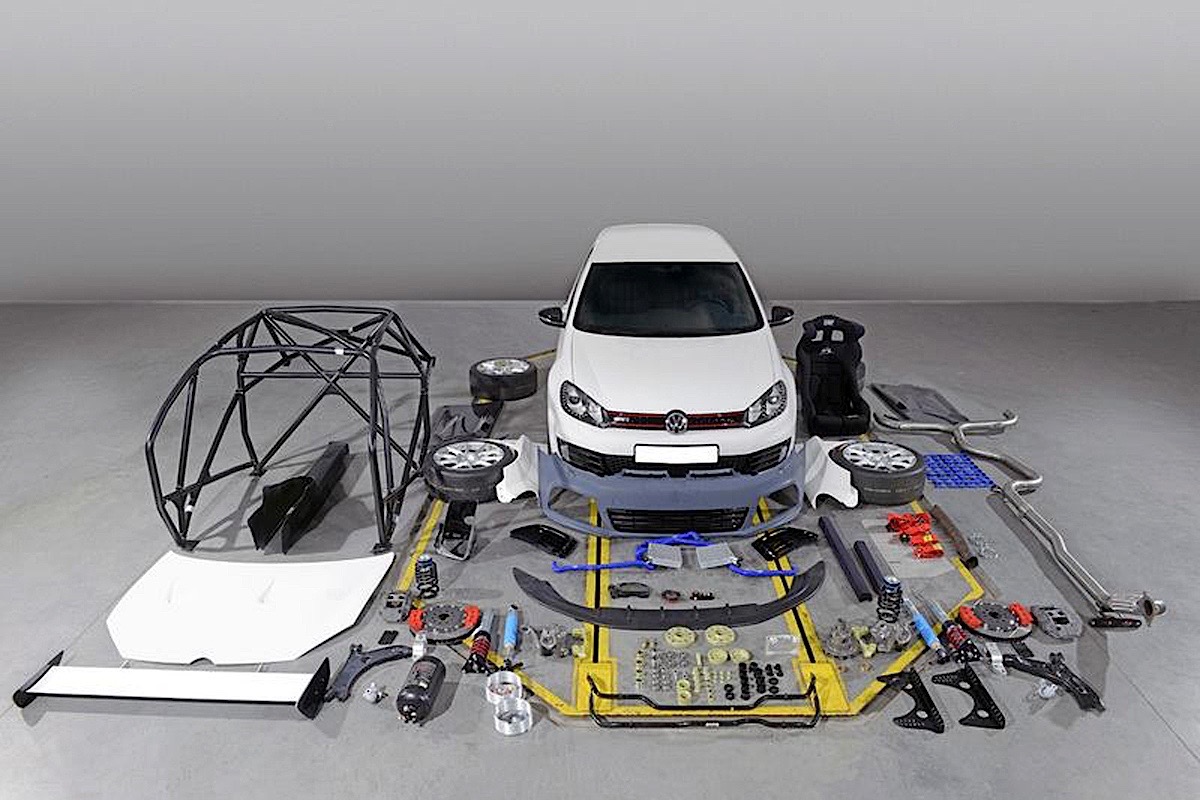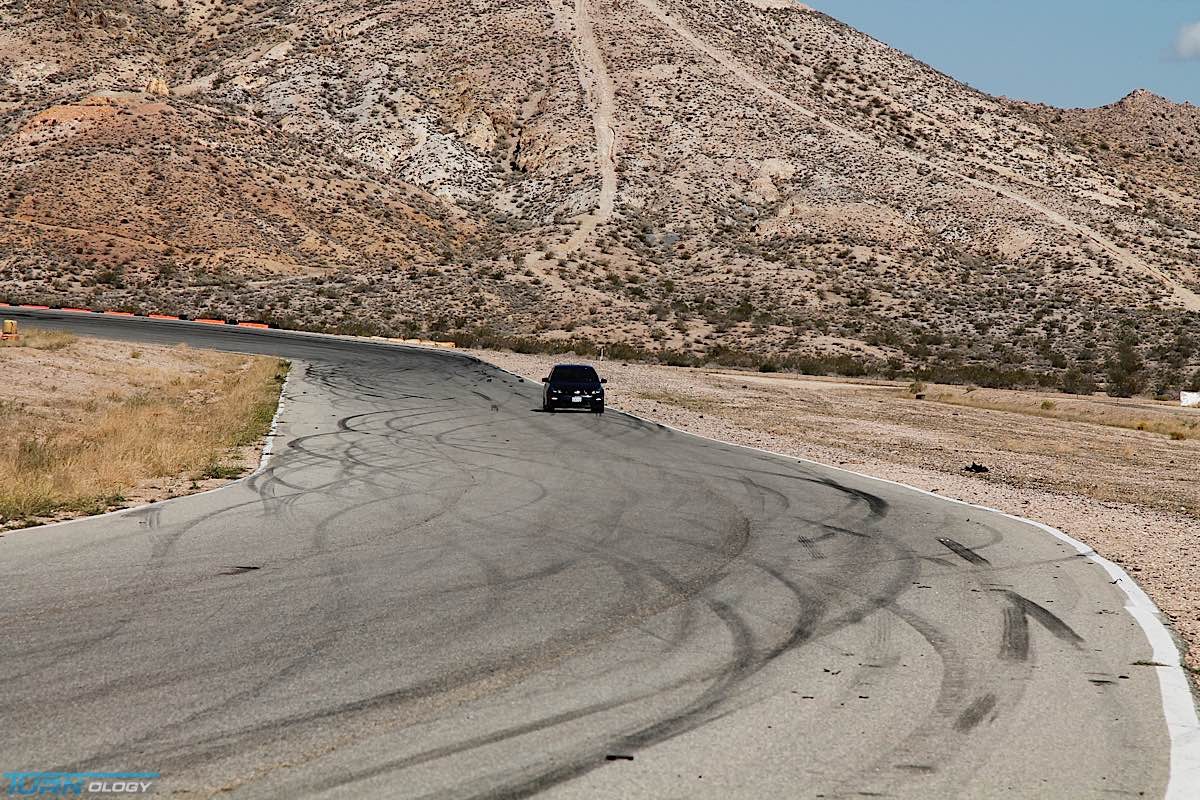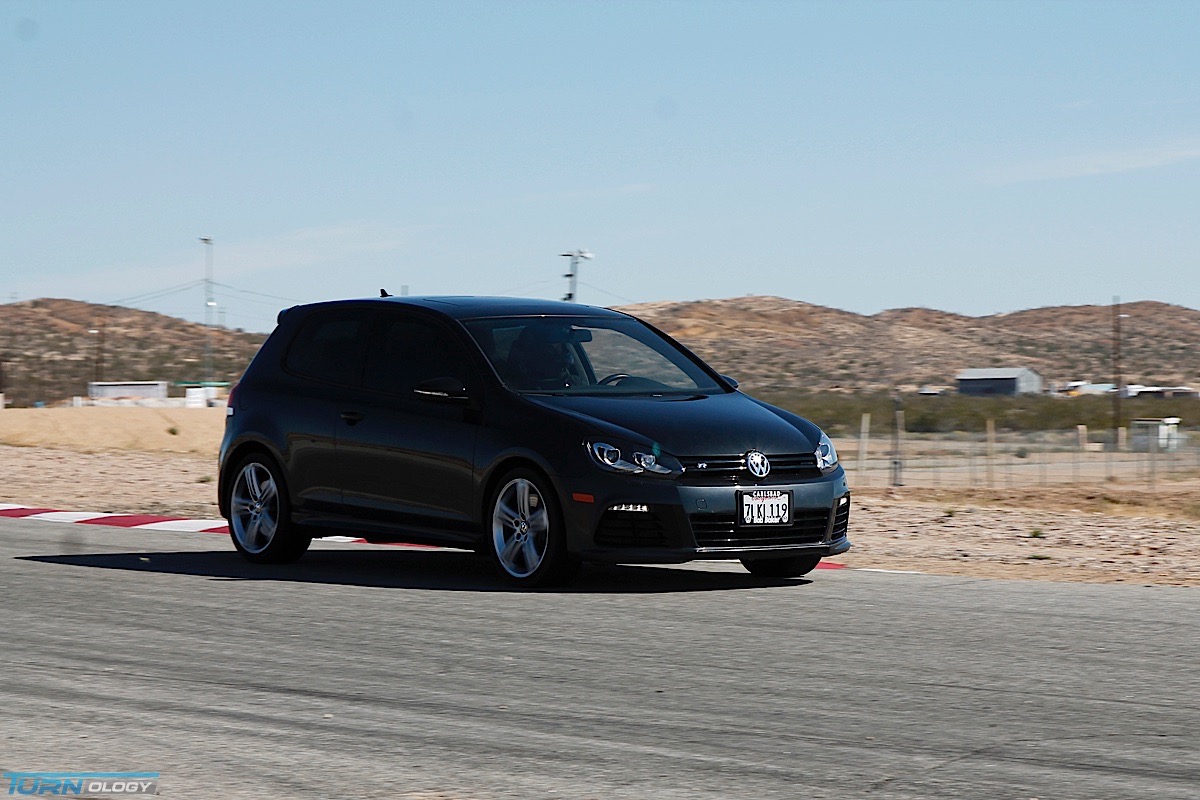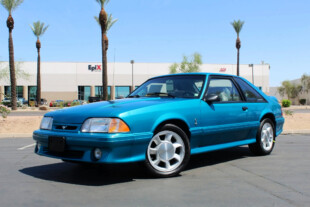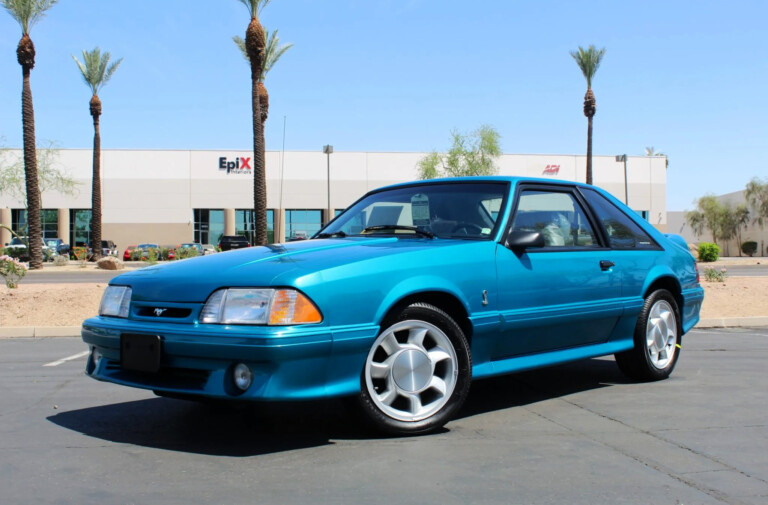 While grip racing is usually the foundation for our endeavors at Power Automedia, we embrace all forms of performance driving and celebrate the art of car control. An increasingly popular segment at a grassroots level is rallycross. It combines both the precision and line strategy of pavement racing, with the slithering car control of loose-surface stage rally.
While grip racing is usually the foundation for our endeavors at Power Automedia, we embrace all forms of performance driving and celebrate the art of car control. An increasingly popular segment at a grassroots level is rallycross. It combines both the precision and line strategy of pavement racing, with the slithering car control of loose-surface stage rally.
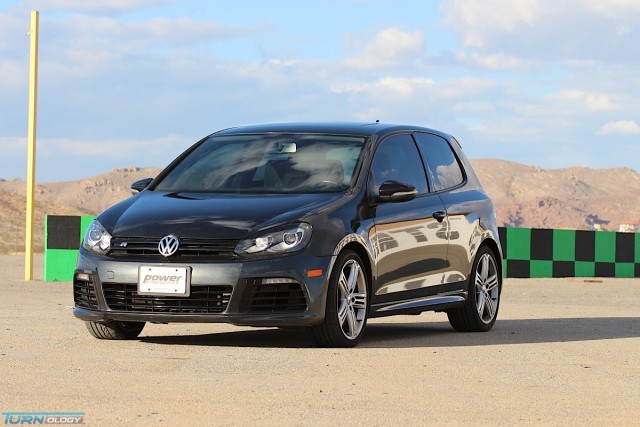 We are excited to introduce our latest addition to the paddock, pit, or parc exposé. Our 2013 Volkswagen Golf R Mk6 will serve as the platform for a build of a more uncommon nature. We propose to create a hybridized tarmac and gravel platform that retains amenities for daily driving, but packs the punch in horsepower and handling for back-road barnstorming.
We are excited to introduce our latest addition to the paddock, pit, or parc exposé. Our 2013 Volkswagen Golf R Mk6 will serve as the platform for a build of a more uncommon nature. We propose to create a hybridized tarmac and gravel platform that retains amenities for daily driving, but packs the punch in horsepower and handling for back-road barnstorming.
With no immediate plans to race or compete in a local rallycross series such as SCCA or NASA, this build should be viewed as a double-duty tracker in much the same manner of the typical weekend autocrosser, but with a twist, and a dusting of silt. In rally terms “Recce,” short for reconnaissance and pronounced recky, is the pre-race opportunity to inspect the rally stage and also refers to the vehicle used to do so. In desert racing terms a pre-run follows the same concept.
Volkswagen Motorsports fields multiple recce cars in preparation for WRC (World Rally Championship) events around the world. Although the race vehicles are Polo based, the recce cars are Golf Rs with modifications for the rigors of a full rally stage. Our project Gruppe R will follow the same mechanical and aesthetic cues.
The Car
When setting out to go amateur rallying or the like, one often reaches for the nearest Subaru or Mitsubishi. While these steeds have more than proven their capability in this department they are often viewed as ostentatious and vulgar by the non-car community. The Golf presents a much more grown-up appearance, comfortable interior, holds all the performance potential we need, and there’s something to be said for following the path less-traveled.
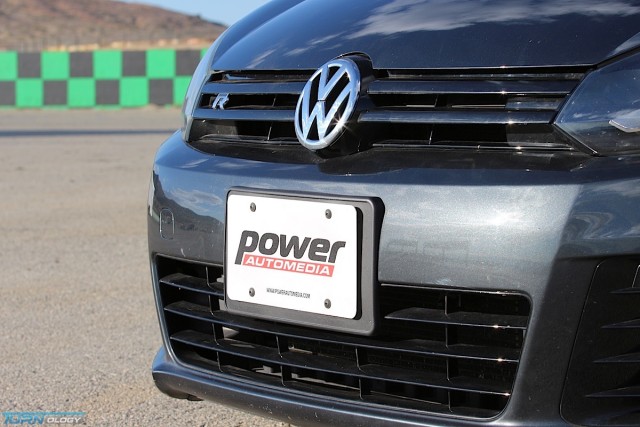 Mechanically the Golf R is very different from the good ‘ol GTI. While a 2.0-liter turbocharged engine powers both, they share almost no powerplant components. The base engine for the R is beefier, featuring stout connecting rods, wrist pins, different camshafts, and a larger K04 turbocharger, among other improvements.
Mechanically the Golf R is very different from the good ‘ol GTI. While a 2.0-liter turbocharged engine powers both, they share almost no powerplant components. The base engine for the R is beefier, featuring stout connecting rods, wrist pins, different camshafts, and a larger K04 turbocharger, among other improvements.
The true defining difference between the two however, is the way power is transferred to the ground. Available in either a DSG paddle-shifting gearbox known for lightning-fast shifting, but fragile parts, or a manual six-speed, the transverse-mounted engine powers all four wheels under adverse conditions.
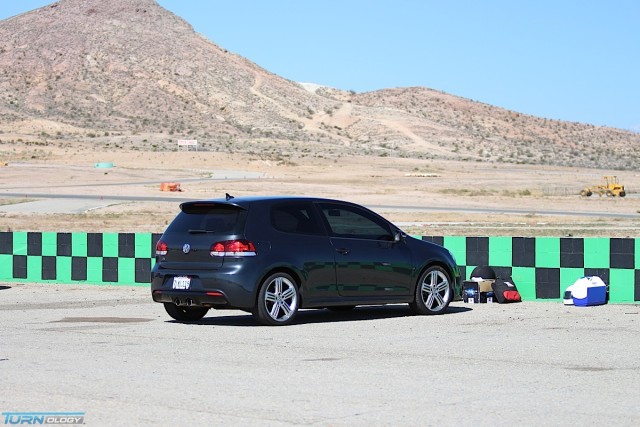 Thanks to a Haldex-controlled fluid coupling system, the Golf R remains a front-wheel drive car until the onboard sensors detect slip or the potential for wheel slip. As the electronics kick in, power can be transferred to the rear wheels pivoting the car around corners and maintaining traction on slippery surfaces.
Thanks to a Haldex-controlled fluid coupling system, the Golf R remains a front-wheel drive car until the onboard sensors detect slip or the potential for wheel slip. As the electronics kick in, power can be transferred to the rear wheels pivoting the car around corners and maintaining traction on slippery surfaces.
The sensation of power moving around intelligently is largely seamless and goes unnoticed by all but the keenest of drivers. This system has been extensively criticized for not being true full-time AWD, however, aftermarket solutions exist to prioritize performance over efficiency.
Inspiration
The conception of this project was the product of combined passions. The dynamism and unpredictability of rally reined in by the exacting challenge of time attack racing is an exciting liminal space to explore. Specific inspirations are derived from various factory and privateer race vehicles.
 First and foremost are the VW factory-supported World Rally Championship (WRC) Polos fielded by Sébastien Ogier, Jari-Matta Latvala and Andreas Mikkelsen. These potent little rally cars have been at the top of the leader boards thanks to their masterful drivers and well-deisgned platforms.
First and foremost are the VW factory-supported World Rally Championship (WRC) Polos fielded by Sébastien Ogier, Jari-Matta Latvala and Andreas Mikkelsen. These potent little rally cars have been at the top of the leader boards thanks to their masterful drivers and well-deisgned platforms.
Built to be easily retrofitted between tarmac and gravel, these AWD, turbocharged monsters are fast, faster than they have any business being. Thanks to extensive aero, and rough-surface tuned suspension, these superhatch race cars stick on the loosest of surfaces, and pivot around hairpins at the will of the driver.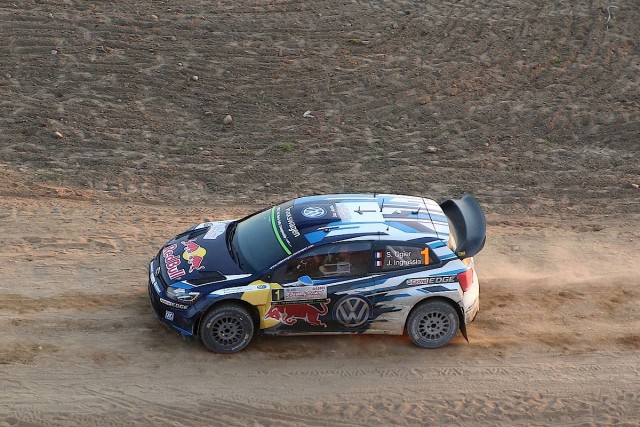
The second inspirational contributors are the VW-sanctioned spec racers of the Castrol Cup. Produced in Poland by VW’s motorsport mechanics these race-prepped Golf GTIs are fully caged, feature uprated suspension, brakes, engines, and body aerodynamics in the form of an angular wide-body conversion and are wind-tunnel-tested to be more efficient at directing airflow around the flanks of the car, similar to it’s smaller WRC counterpoint.
Borrowing a little nostalgia from the tuned Euro-imports of yesteryear, we are also looking at the aesthetics of widebody 911s and Porsche’s inextricable connection to Volkswagen. Manifesting in VW tuning culture as a style known as “German Look,” these cars are often marked by gratuitous carbon fiber, polished stainless steel, aluminum, and Porsche parts. The project name we have coined for our Golf R is Gruppe R, a deliberate reference to the glory of Gruppe B rally cars’ elaborate, exciting, excess.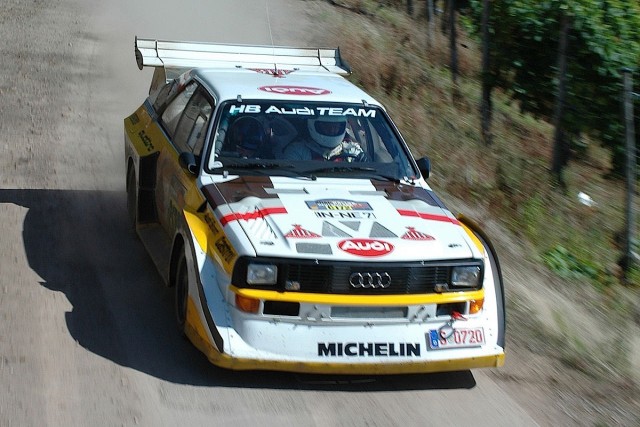
Proposed Modification Goals
We begin with a base car, completely stock. The first owner of this car traded it in with under 15,000 miles for and electric Golf, so we can assume little spirited driving took place before we acquired this 2-door superhatch.
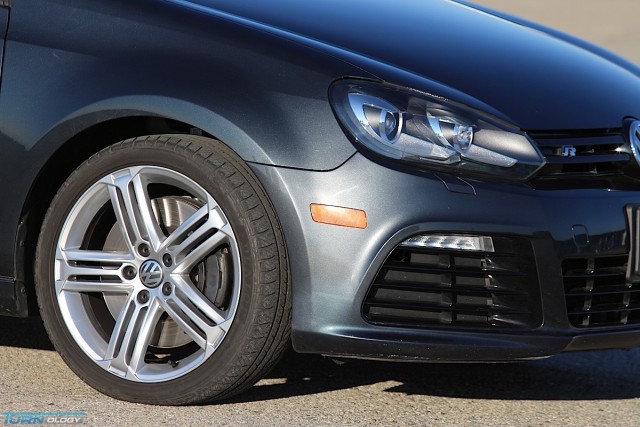 The modifications for this project are holistic in nature. From electronics to nuts, and bolts to composites, we will have our hands in numerous systems. Our goal is to improve the overall performance without compromising practicality, so a full cage, race seats, harnesses, and other hardcore mods will have to wait. Aesthetic changes will be functional in the form of aerodynamics, while providing a more rough and tumble appearance to the normally button-down appearance of the Golf.
The modifications for this project are holistic in nature. From electronics to nuts, and bolts to composites, we will have our hands in numerous systems. Our goal is to improve the overall performance without compromising practicality, so a full cage, race seats, harnesses, and other hardcore mods will have to wait. Aesthetic changes will be functional in the form of aerodynamics, while providing a more rough and tumble appearance to the normally button-down appearance of the Golf.
Defining the aesthetics and aero, the Golf will receive a widened track width to reflect the additional needed stability on such a short wheelbase. Body work will accompany the flared stance to the tune of VW-developed panelling to echo the aggressive appearance and function of both the WRC and Castrol Cup examples.
 The engine of the Golf R produces a healthy 256 horsepower from the factory but tuning options for these platforms are wide ranging. We plan to stick with a mild tune for reliability and longevity. ECU programming, a cat-back exhaust, and induction system work should easily get us to the 330 horsepower range at the flywheel, right on par with the output of the WRC Polo.
The engine of the Golf R produces a healthy 256 horsepower from the factory but tuning options for these platforms are wide ranging. We plan to stick with a mild tune for reliability and longevity. ECU programming, a cat-back exhaust, and induction system work should easily get us to the 330 horsepower range at the flywheel, right on par with the output of the WRC Polo.
The Golf R comes standard with lower and stiffer suspension than the GTI. For our application, compliancy over rough surfaces will be just as important as rigidity through the corners. In order to achieve this effect we will employ a coilover system with both high — and low-speed valving to optimize suspension compliancy under multiple surface conditions.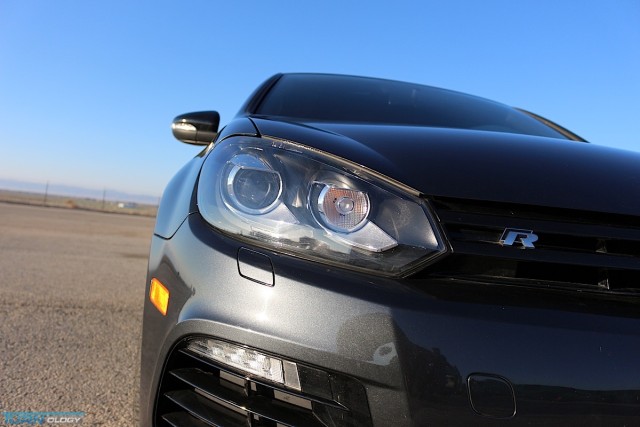
Eighteen-inch diameter wheels are the standard on a track-geared street car like the R, we want a little more sidewall for some forgiveness on rough tarmac and gravel. Striking a compromise between brake size under a 15-inch gravel wheel, and tire size on an 18, we will utilize 16-inch wheels. This car will see more rough tarmac than track use so modifications will reflect our goal to make this car a wet weather, and loose surface monster.
Baseline Impressions
Driving the Golf R around town it behaves much as you would expect: modest, practical, and efficient. The suspension is slightly firm but not uncomfortable over uneven pavement, manhole covers, drainage troughs, or speedbumps. The powerband of the R is where this car reminds you of it’s performance.
With little bottom-end torque, it is difficult to leave the line anywhere between granny crawl and full launch. With some boost built and an impatient left leg slipping the clutch, the R hooks up and rockets off the line with unexpected urgency.
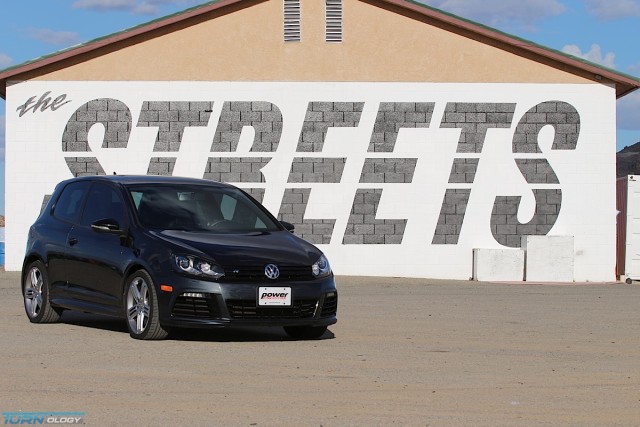 We had the opportunity to get some baseline driving impressions of the Golf R at Willow Springs, Streets of Willow (clockwise). Around the technical road course the R displayed road-holding capabilities that far exceeded our expectations.
We had the opportunity to get some baseline driving impressions of the Golf R at Willow Springs, Streets of Willow (clockwise). Around the technical road course the R displayed road-holding capabilities that far exceeded our expectations.
Even with sporty bolstered seats the AWD system will keep the lateral G high enough to throw you from your seat. Inertia-reel seatbelts be-damned! Braking was responsive and crisp from the stock 345 mm front rotors. While the traction control on the U.S. version of Mk6 Golf R cannot be fully disengaged it will allow you a little leeway. Even on our stock 225/40R18 tires a loss of traction was never a concern.
Driving on gravel and dirt roads the R is surprisingly forgiving. The low ground clearance is some cause for concern so any additional drop in height will be taken sparingly. The firm track-bred spring rates and valving are slightly less compliant than would be desirable on square-edged, un-even road features. Over washboard terrain the car floats with a supple quality not usually found in a sport compact.
Complaints about the Golf’s track manors include the steering, which while faster than a GTI, is still painfully slow if you are used to a quick ratio rack. Straight line power left some to be desired as one would imagine. Shifting is a somewhat sloppy operation with the stock stick, finding gears in rapid succession can be somewhat vague and will need rectifying.
Overall we are excited to embark on a project a little off the beaten trail. With little to no aftermarket support geared toward VW recce conversions we will be piecing together our own packages, borrowing technology and designs from many suppliers foreign and domestic. In collecting parts we have already reached to Warsaw, Hong Kong, Spain and South Africa and foresee more exotic parts-sourcing to complete the vision. Stay tuned as we post updates on the progress and walk through the various stages of the build from power to suspension and to aero and beyond!



